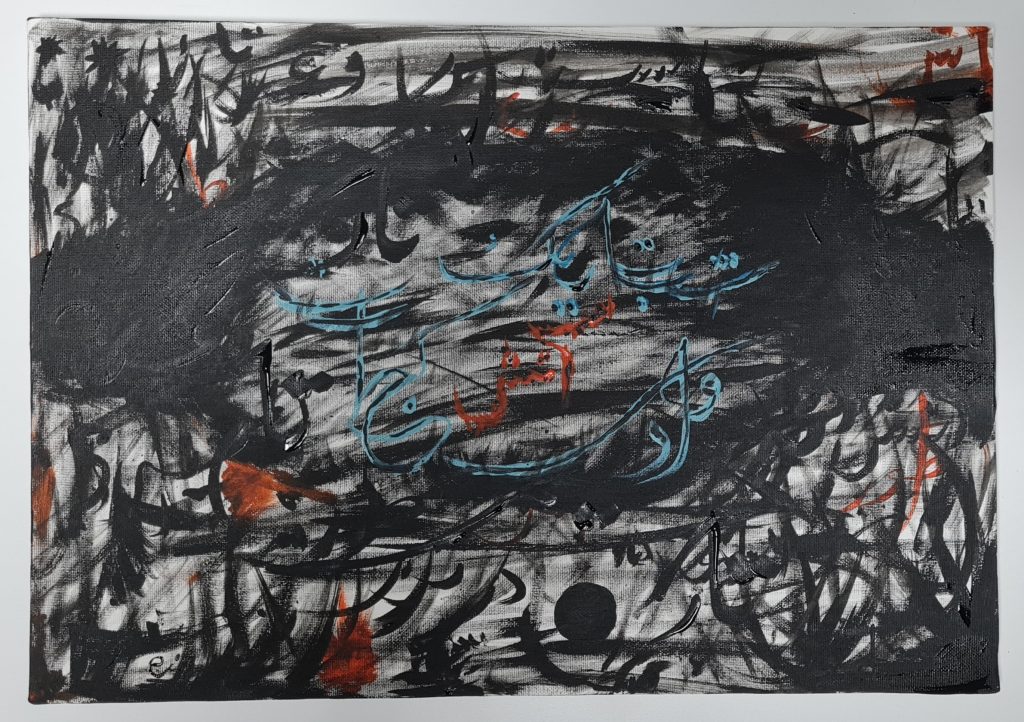
_____
Tablo Adı: Nerede?
Sanatçı: Necip YILDIRIM
İlham Kaynağı: Şîrazlı Hâfız’ın şu beyti ilham kaynağı olmuştur.
شبِ تار است و رَه وادیِ اَیمَن در پیش
آتش طور کجا؟ موعد دیدار کجاست؟
Şab-e tar ast o rah-e vadi-e Ayman dar piş
Ataş-e Tûr koca? Moed-e didâr kocast?
Gece karanlık ve önüm(üz)de Ayman vadisi var.
Tûr ateşi nerede? Buluşma yeri nerededir?
“Bu beyitte, Hâfız-ı Şîrazî hazretleri Musa aleyhisselamın Allahü teâlâ ile tekellüm ettiği hikayeye gönderme yapmaktadır. Zahiren bahsi geçen hikaye ima edilmiş görünse de, şair hikayedeki sembollerle ciltler dolduracak mânâlar derc etmiştir.” N. Y.
Bazı kaynaklarda bu beyit şu şekilde geçmektedir
شبِ تار یک و رَه وادیِ اَیمَن در پیش
آتش طور کجا؟ وعده دیدار کجاست؟
Şab-e taîk o rah-e vadi-e Ayman dar piş
Ataş-e Tûr koca? Va’de-ye didâr kocast?
——
Name: Where?
Artist: Necip YILDIRIM
Inspiration: The following couplet from Hafez Shirazi:
شبِ تار است و رَه وادیِ اَیمَن در پیش
آتش طور کجا؟ موعد دیدار کجاست؟
Shab-e tar ast o rah-e wadi-e Ayman dar pish
Atash-e Tur koja? Moed-e didâr kojast?
It is a dark night and the valley of Ayman is ahead!
Where is the fire of Tur? Where is the meeting point!
“In this couplet, Hafez has refered the story of prophet Moses who spoke to the Creator in the mountain Tur (Mount Sinai). After a long journey through Ayman valley. Layers upon layers of meaning is embedded behind every symbols, every word: A tome might incapable to embrace all.” N. Y.
In some sources, this couple is as following:
شبِ تار یک و رَه وادیِ اَیمَن در پیش
آتش طور کجا؟ وعده دیدار کجاست؟
Shab-e tarik o rah-e wadi-e Ayman dar pish
Atash-e Tur koja? Wade-ye didâr kojast?



